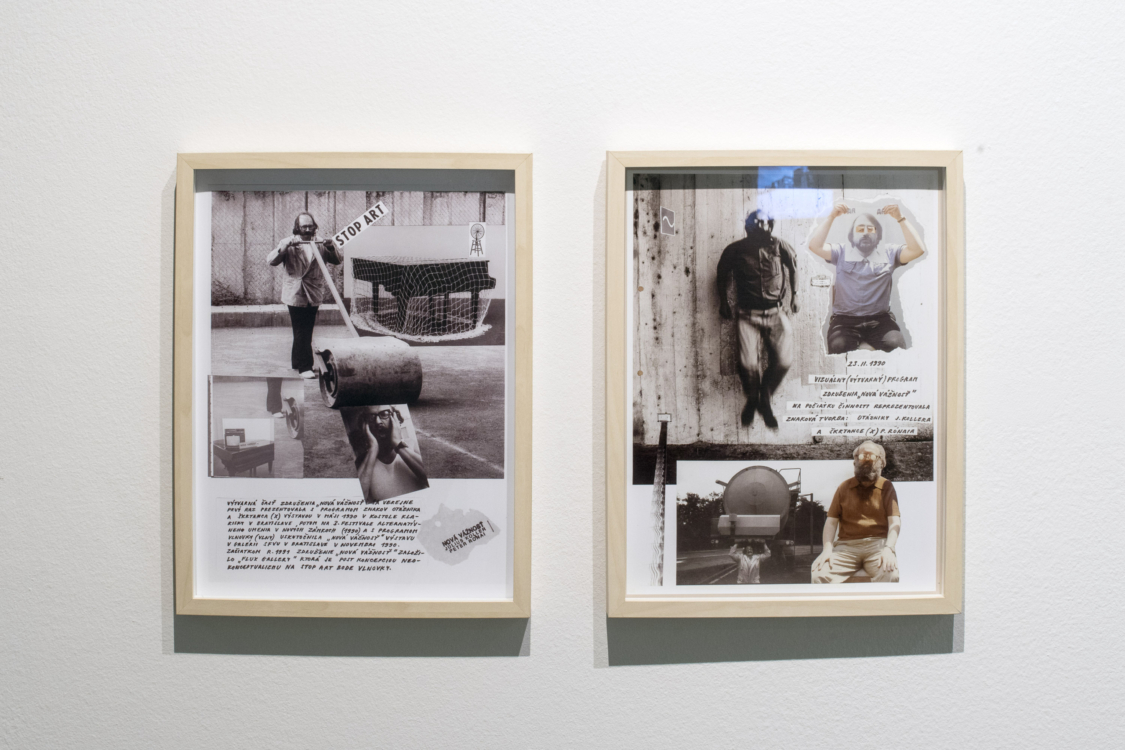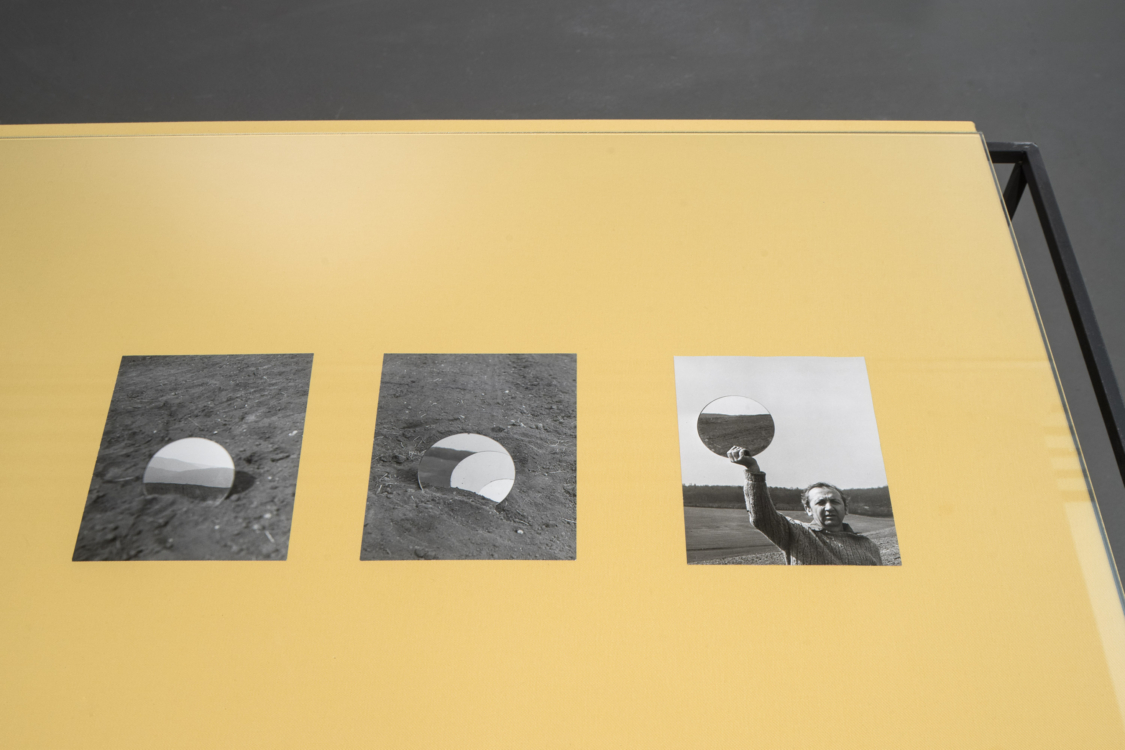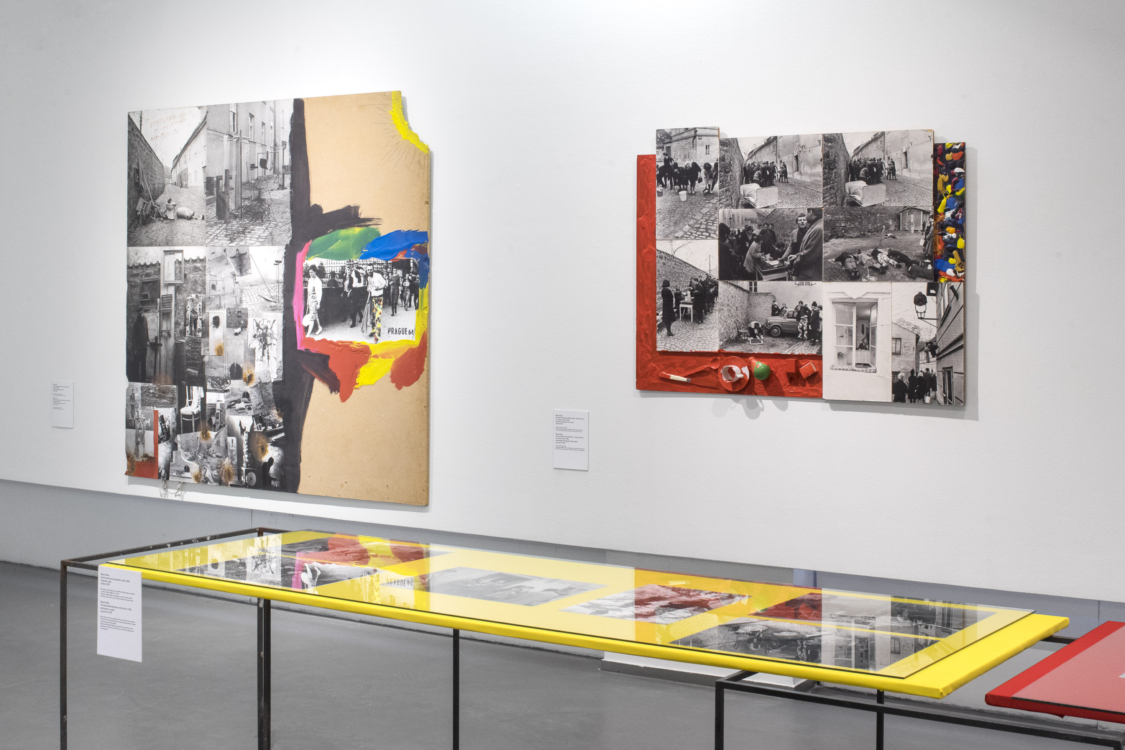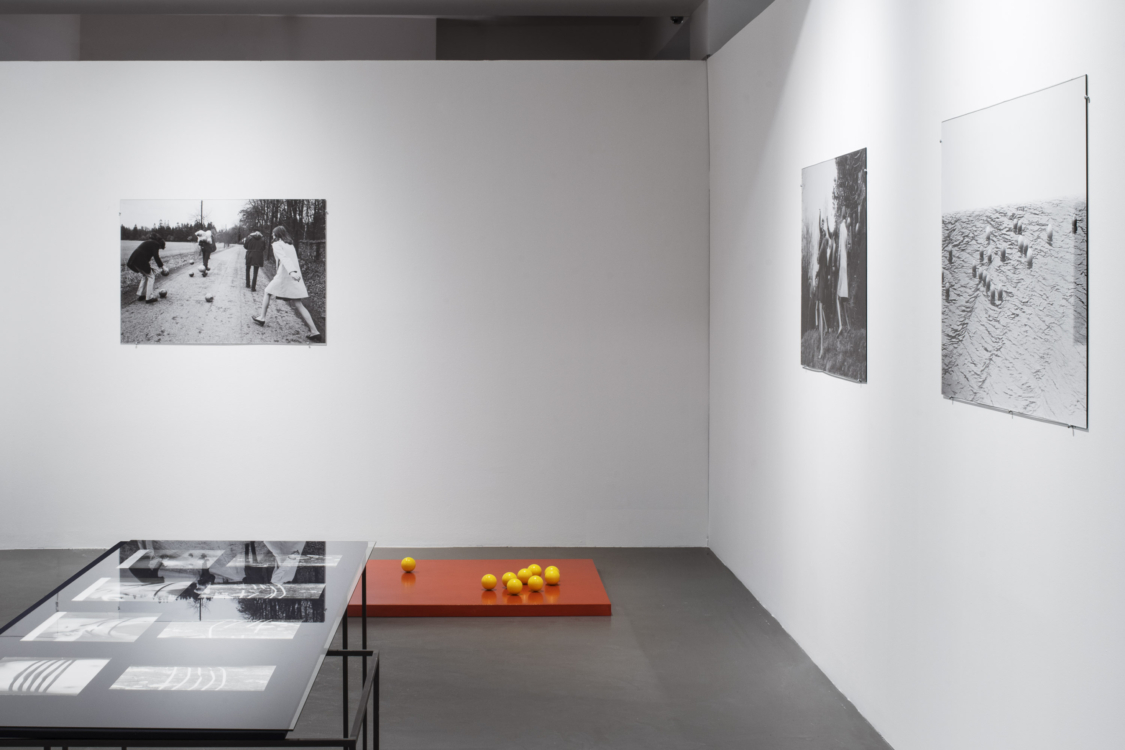The recording of Tomáš Ruller’s 1987 Pakulení performance stands out at the No Art Today? exhibition for several reasons. It is one of the few achievements in the moving image medium, and it is also the oldest one to have been created using video technology. It is also the only one for which a large projection area has been reserved at the exhibition. And, as I will attempt to demonstrate in the following text, this twelve-minute edited video of an event that took a rather long period of time is also extraordinary in its general approach to what is to be recorded in a performance and why.
In the opening shot, we watch Ruller enter a vast, people-filled foyer, carrying a heavy cardboard bag over his shoulder. Younger generations, especially, may not immediately understand that these are the premises of the Palace of Culture, today’s Congress Centre, in Prague’s Pankrác district. Considering the fact that cultural and political events were held there during socialism, including congresses of the ruling Communist Party, Ruller’s event in the very bowels of this building takes on the dimension of a kind of subversive penetration into the ideological-cultural epicentre of the regime. In any case, it took place under bizarre circumstances: during the second edition of the Rockfest music festival, which, in the phase of the cautious “restructuring” of late socialism, gave rise to hopes that a legitimate space for musical alternatives and associated subcultures was emerging in the cultural monolith of socialist Czechoslovakia. Punk (and not only punk) legally entered the imposing Palace of Culture at that time! The programme included an exhibition of contemporary art and Tomas Ruller was one of the participants.
However, the surprising thing about Ruller’s editing of the recording is how little he focuses on the action taking place in the exhibition space. In fact, the attention is mainly focused on those moments when he left the exhibition and walked freely among the people who attended the concerts. He moved among them, all in white, covered in plaster, first with two plastic buckets, later with Walkman headphones on his ears, and immediately afterwards with his sunglasses worn backwards. A charming moment came when his unusual appearance drew disbelieving looks (by the standards of the time) cast on him by similarly eccentric punk girls.
The performer’s walks through the crowd culminate in a debate with a group of corpulent men in suits, who lead him behind the glass door of the entrance reserved for the employees. In the video annotation on the AVU’s Research Institute website, we read of the events that were taking place being followed by “a heated debate with the Rockfest organizers who managed to prevail upon members of the police to allow Ruller to complete his performance, but only in the space allotted to him at the exhibition”. The final part of the recording therefore logically takes us back to the exhibition. Even there, however, Ruller does not mediate the entire event. Apparently some time must have elapsed since his return, so he is no longer covered in white dust, but wears a new layer of colourful paint. He sits down on the prepared stage and is slowly being painted and covered in dry plaster powder poured on him by two young people invited to do so. The fact that Ruller’s aim is to draw attention mainly to the passages where interactions with other people occur is ultimately underlined by the final scene of the edited recording. In it, a young woman insists that the seated performer answer her question: “What are you doing here?” Ruller doesn’t answer, and the conversation with the assistant, a young man, is also clearly unsatisfying. Her act, on the other hand, elicits laughter in the bystanders, and she eventually leaves angrily.
Ruller’s increased attention to the interactions at the exhibition, which has at its core new acquisitions of Czech and Slovak performance and body art of the 1960s-1980s, is matched only by the documentation of Milan Knížák’s happenings. However, these took place more than twenty years earlier, and in their courage to enter an unsecured social space through visual means, they remained unique for a long time. What No Art Today? says about performance art and, to a lesser extent, conceptual art of that time, is primarily a story about a world where even the “islands of positive deviance” were inhabited only by small communities and where the decision to engage in performance or conceptual art meant accepting that, at least in the domestic environment, these communities would not be recognized at all outside their bubbles, with rare exceptions. This non-acceptance and exclusion, reinforced by surveillance and harassment by the security forces, ultimately led to an escalation of (self-)isolation. Artists therefore performed their events in front of a minimum of invited guests, and sometimes even alone, only in the company of a documenting photographer.
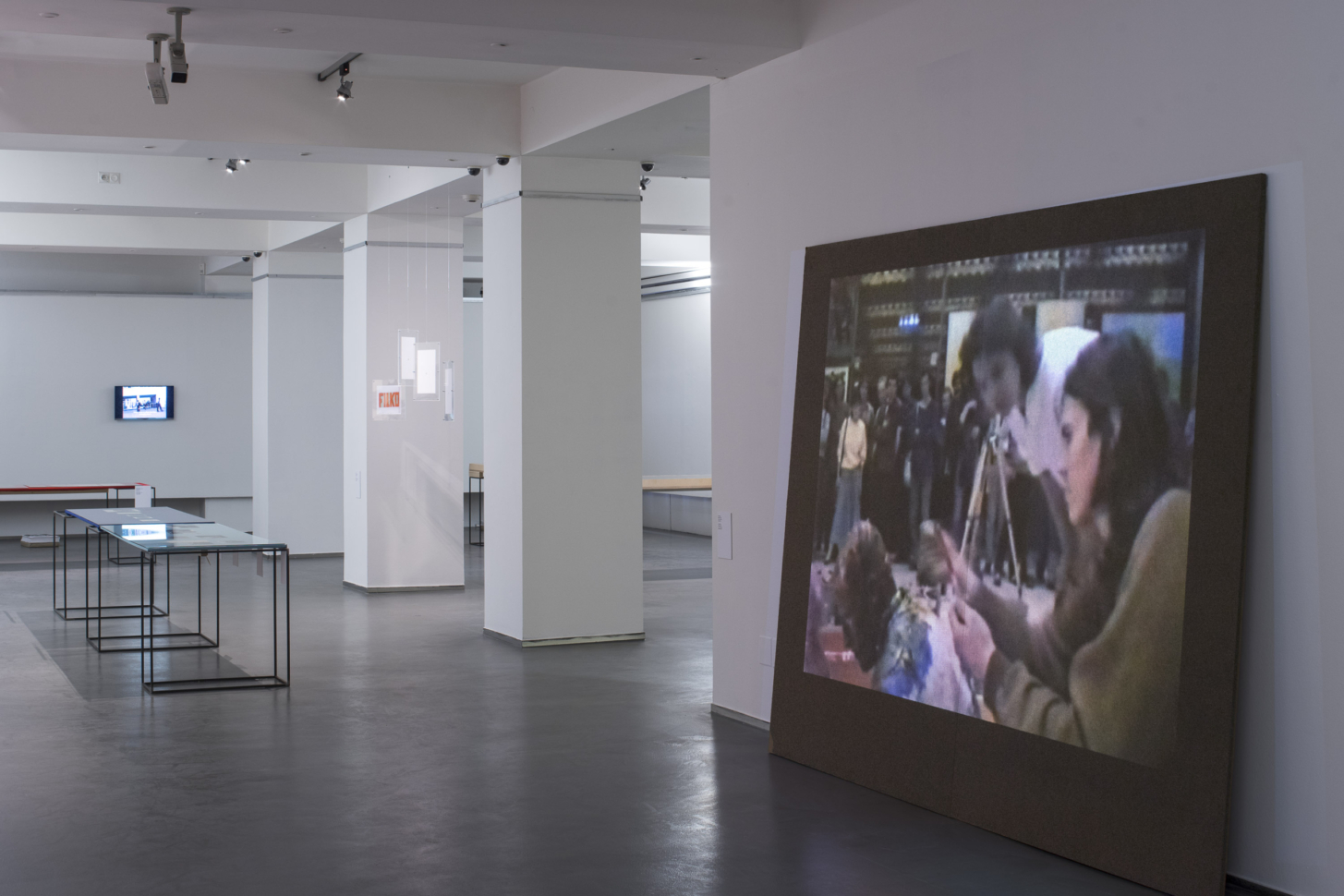
The curatorial team of No Art Today? decided to go beyond the pragmatic horizons of an “exhibition of acquisitions” and to treat them as if they were putting together a thematic exhibition. The team could afford to take this somewhat bold move thanks to the years 2018-2020 that were above average in terms of creating the collection. During this period, the gallery managed to acquire respectable sets of work from most of the representatives of Czech action art (and, alongside them, several interesting works by Czech and Slovak conceptualists). It wouldn’t have been enough for a comprehensive presentation of the art of the given period but it was basically enough for an “associative game”, as the collective described its approach. It is a sophisticated game, and at times escapes the possibility of identifying the previously announced associative chains. Sometimes, it even leaves the given time frame, but never entirely without reason. But if there is something essential that permeates the whole of this game as its basic rule, it is a certain “fundamentalism”. The curatorial team, for example, never adds anything beyond what the artist himself has associated with the work. If the work was previously accompanied by a description, which was the custom especially in the case of photographically documented performances, it appears in that same wording at this exhibition. Conversely, if the artists previously chose not to add anything, the curators of No Art Today? remained faithful to that choice too. This is true even at a cost of absurd moments, such as the presentation of the small printed matter related to the groundbreaking event Happsoc I by Slovak artists Stano Filko and Alex Mlynárčik, from which it can in no way be clear that it is related to the unilateral declaration of Bratislava, its landmarks and inhabitants, including their pets and possessions, which were part of a week-long happening in 1965.
The approach to dating some of the artefacts is also almost “purist”. Knížák’s brilliant pictorial assemblages from the 1980s in which he accentuated photographs of older events by painting on them, by burning holes in them, or by the insertion of three-dimensional objects, can be found in the exhibition exclusively with the dates from the 1960s when the events happened. The same is true of the canonizing book collections documenting the events of the “holy trinity” of Czech performance art: Miler – Mlčoch – Štembera. Although these were not produced until 1997 for their “commemorative” exhibition at the GHMP, at No Art Today? they remain dated within the period of their original activity in the 1970s. The same is true of the large-scale reprints from Vladimír Ambroz’s performances.
Details such as these at No Art Today? seem to suggest that any sediment on an original, experienced event, on a work intended in a certain way, or even on the event’s first and most immediate mediation, necessarily detracts from the intensity of the original message. It does not really matter that this is how the artists themselves treated the aura of their works.
But there is another detail that might shift the peculiar impression of the perhaps unconscious inclination of the curators of No Art Today? to a different interpretation. And it concerns Ruller’s Pakulení, specifically its soundtrack, which is muted to the point of inaudibility at the exhibition. What are we to make of the fact that we’re not actually supposed to hear the noise produced by the crowd, the fragments of musical productions, and the excited speech of a woman who, judging by her attire, was probably (?) one of the event’s organizers? The introductory text to the exhibition does not, of course, contain an explanation of such a small detail. It does, however, open up space for speculation which stems both from the tendency to symbolically remove the layers added by the artists later, and from the general characteristics of the work in (self-)isolation of unaccepted and excluded artists during the period of state socialism. It could thus be said about No Art Today? that it presents the art of this era as art of the past but without any context and thus without history, and as art that figuratively existed in “silence” without the sounds of the times and so continued to deserve its silence. Even if this sound was sometimes part of it.
In the last thirty years at least, the art of action and concept has become an intensely researched historical phenomenon. It has moved from the periphery to the centre of the canon of Czech and Slovak art history. The No Art Today? exhibition seems to take its much-praised features to the extreme. As a side-effect, it raises the question of what we would learn about it if we reversed the principle and, aware of a certain hereticism, drove it out of its silent refuges as one of the reactions to the world in which it took place. And I don’t mean just the art world at all.

